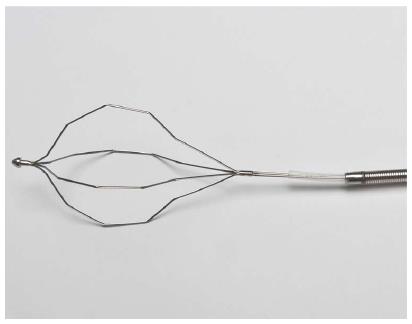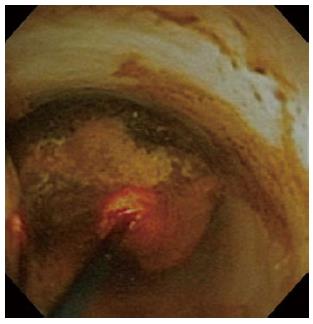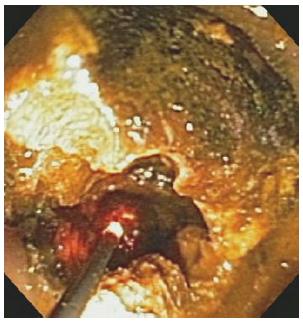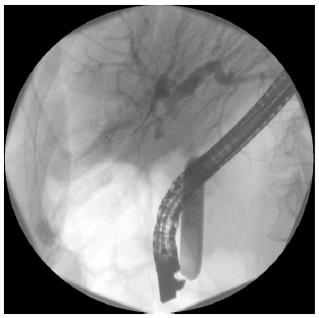Copyright
©2013 Baishideng Publishing Group Co.
World J Gastroenterol. Jan 14, 2013; 19(2): 165-173
Published online Jan 14, 2013. doi: 10.3748/wjg.v19.i2.165
Published online Jan 14, 2013. doi: 10.3748/wjg.v19.i2.165
Figure 1 Example of a three-layered mechanical lithotripsy device with the basket, inner plastic sheath and an outer metal sheath.
The stone is captured by the basket and crushed against the outer metal sheath.
Figure 2 Image of a mechanical lithotripter which can be used as a “salvage device” for removal of impacted baskets.
Figure 3 Laser lithotripsy of a bile duct stone under cholangioscopic guidance.
Figure 4 Direct peroral cholangioscopy guided laser lithotripsy of a bile duct stone.
The red laser light makes targeting of the stone easier).
Figure 5 Large diameter papillary balloon dilatation to remove bile duct stone.
- Citation: Trikudanathan G, Navaneethan U, Parsi MA. Endoscopic management of difficult common bile duct stones. World J Gastroenterol 2013; 19(2): 165-173
- URL: https://www.wjgnet.com/1007-9327/full/v19/i2/165.htm
- DOI: https://dx.doi.org/10.3748/wjg.v19.i2.165













